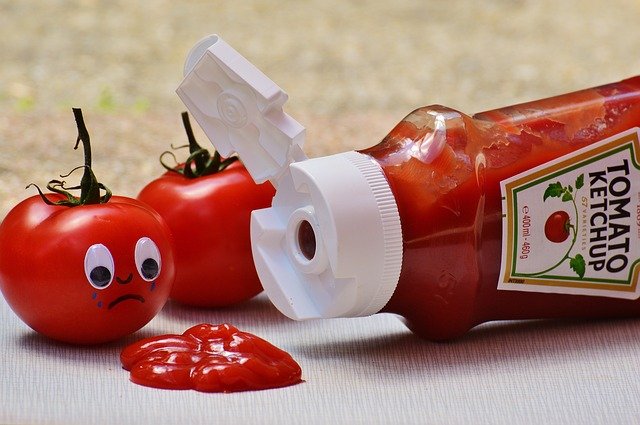The physics term viscosity refers to how much a liquid resists changing shape when it’s moving. For example, when you pour water, it doesn’t resist changing shape. However, ketchup does. But it doesn’t end there.
Viscosity is commonly understood as thickness. Liquids like olive oil, ketchup, and paint are more viscous than water.
The measure of a liquid’s viscosity has a lot to do with how easy or hard it is to move. With something like water, the more pressure you apply, the faster it moves.

But some liquids, like ketchup, are easier to move with low pressure than with high pressure! This makes no sense, but it’s how physics works.
Newton didn’t get it
Less viscous liquids, like water, retain the same viscosity (thickness) regardless of the degree of force applied—shoot it out of a high-pressure hose or drip it out of a faucet, it’s all the same.
But other liquids can increase or decrease in viscosity depending on pressure. Dairy cream, for example, will thicken if you apply force in the form of stirring it vigorously, and will eventually become whipped cream, which is much more viscous. Honey, on the other hand, becomes less viscous when stirred—it heats up and becomes easier to move.
What’s going on here? What we have are what’s called non-Newtonian Fluids. Isaac Newton, for all his genius, didn’t get what these fluids are about.

Fluids that retain the same viscosity regardless of forces are called Newtonian, while the ones with changeable viscosity are called non-Newtonian. Newtonian fluids pour evenly and steadily, while non-Newtonian fluids tend to change speed as they pour.
Water and beer are Newtonian, while some liquid substances are non-Newtonian.
| Newtonian | Non-Newtonian |
| Water Milk Blood plasma Oil Beer | Yogurt Ketchup Syrups Blood Toothpaste |
Non-Newtonian fluids can act like solids!
Consider ketchup in a plastic, squeezable bottle. When you turn the bottle upside down and shake it, that force dislodges the ketchup as a solid mass and moves it near the squeeze hole.
The ketchup is acting like a solid.
At that point, if you squeeze very fast and hard, you don’t get much ketchup; the squeezed air simply blows a hole through the middle of the mass. That extreme force causes the ketchup to continue to act like a solid.
But if you squeeze gently, the ketchup starts to behave like a liquid and flows out of the hole.

It’s a solid when forced hard, and a liquid when gentle force is applied. What?
That’s non-Newtonian fluids.
You can learn more about these curious fluids in Chapter 9 of Physics for Animators.
